The ephemeral beauty of being, and otherwise – Luise Guest reviews Song Dong Waste Not and Don’t Worry Mum and Dad We Are All Right…
Ten thousand objects collected by the artist Song Dong’s mother Zhao Xiangyuan, over the course of her adult life, are arranged in neat rows and grids on the ground at Carriageworks. During the Cultural Revolution, a period of extreme uncertainty and privation, she began hoarding – drying out and keeping even her allocated bars of soap for fear of future soap shortages. Continuing right through to her last years, Zhao saved everything, in a process called “wu jin qi yong”, translated as “waste not”. This is the latest incarnation of Chinese artist Song Dong’s extraordinary installation, itself entitled ‘Waste Not’.
Song Dong: Waste Not (detail, installation view) Photograph by: Jane Hobson Courtesy Barbican Art Gallery.
Entering the vast space one first sees a row of old chairs, and beyond them the reconstructed frame of Zhao’s traditional timber home. Radiating from the skeleton of the house, the possessions it once contained are laid out on the floor: among them 4 TVs, 3 record player turntables, numerous clocks and watches, broken toys, lamps, old umbrellas, plastic buckets and tin washing tubs, rows of shoes, coat hangers, threadbare face washers, stacked quilts and blankets, polystyrene food containers, empty plastic bottles and their lids, and hundreds of plastic bags folded into neat triangles. They are unbearably poignant in their sheer ordinariness.
Song Dong: Waste Not (detail, installation view) Photograph by: Jane Hobson Courtesy Barbican Art Gallery.
People wandering through the rows of objects wonder aloud how one person could possibly have collected and kept all this stuff. Anyone encountering this work here in Sydney or in its previous iterations in New York at MOMA, or in Beijing, Korea, Berlin or London’s Barbican will respond in ways which reflect their own relationship with possessions – and with their parents. There were uncomfortable resonances for me with the experience of packing up my mother’s house, a process of poring over photographs, letters, postcards sent to her by my younger self, clothing, toys, scraps of material and half-finished knitting, astonishing stacks of newspapers: every item the repository of memories good and bad. Similarly here, every object tells a story about the artist and his family. It has become a memorial to Song Dong’s mother, who died in 2009, and to his own childhood. Prior to her death, however, she was actively involved in the work, to the point of sitting in the installation and engaging audiences in conversation about the significance of the objects and the memories they contained. For Song Dong himself the genesis of the work was a way of trying to help his mother through a period of intense mourning after the death of his father in 2002. At a time when she was almost incapacitated by grief, he developed an artistic collaboration with his mother which challenged accepted notions of the artist, and connected artmaking with a deeply rooted Confucian tradition in Chinese culture centred on family relationships.
Song Dong: Waste Not (detail, installation view) Photograph by: Jane Hobson Courtesy Barbican Art Gallery
This is a work is about love and filial duty, and together with the works on show at 4A Centre for Contemporary Asian Art in ‘Dad and Mum, Don’t Worry About Us We Are All Well’ Song Dong’s practice connects three generations and reminds us of the central importance of family.
I have loved this artist’s work since I saw his installation of a city entirely made of biscuits at Selfridges in London some years ago, and his ongoing ‘Writing Diary with Water’ shown in 2002 at the Asia Pacific Triennial. For many years, Song Dong wrote daily with a calligraphy brush dipped in water onto a block of stone. Water calligraphy is a common practice in China, and parks in Beijing are still full of elderly men writing beautiful characters with giant sized brushes onto the pavements. When Song Dong was a child, his father encouraged him to practise his calligraphy in this way because ink and paper were too expensive. Later, he returned to this practice as an acknowledgement that in this manner one could write secrets without risk of disclosure. For Song Dong and his contemporaries coming to prominence in the 1990s, the tragic events of 1989 and ideas about the power of language, and its role both in dissent and in social control, were very much to the fore in works by Xu Bing, Zhang Huan, Gu Wenda, Qiu Zhijie and others.
Video and still images document the ephemeral beauty of the gradual disappearance of the characters in ‘Writing Diary with Water’. Much of Song Dong’s practice relates to the transient and the ephemeral. ‘Stamping the Water’ records another performance in which he ‘stamped’ the sacred water of the Lhasa River in Tibet with a wooden seal carved with the character for water. As with the water diary, the gesture is one which leaves no trace.
‘Waste Not’ is a very different work, even if only in its sheer overwhelming physicality. It evokes the traces left by people who have departed contained in the objects they have held and touched, and in the memories of their descendants. Like his earlier performance and video work it grows out of the artist’s experiences in the avant-garde Beijing art scene in the early 1990s. This was an exciting cauldron of creative invention and experimentation in performance and conceptual art owing much to the influence of Joseph Beuys. ‘Waste Not’ has been described as ‘healing through remembering’ and it transcends the purely personal or autobiographical to speak powerfully to audiences of many different cultural backgrounds. Art historian Wu Hung has said that one way to understand this work is to see it as “an artistic/ritual project serving two similar purposes: to preserve historical memory and to enhance social relationships.” We may not necessarily understand the intricacies of ritual surrounding the ancestral temple or mortuary shrine, but we can all relate to the impulse to hoard objects of personal significance and at the same time to the feeling of growing anxiety caused by the accumulation of possessions and ‘things’ that surround us and fill our living spaces.
With the timber reconstruction of his mother’s traditional Beijing courtyard home in the centre, surrounded by the objects arranged in neat grids and patterns, one is also inevitably reminded of the great tidal wave of demolition and reconstruction that has swept over China, transforming the physical landscape of cities and the emotional landscape of family relationships. The age old patterns of multigenerational dwellings around courtyards or laneways have given way to high rise apartments where people live far from their traditional neighbourhoods and often also from their children or extended family. Song Dong, like many contemporary artists in China, has been reflecting on this process of dramatic change, most recently with the ‘para-pavilion’ he created for the 2011 Venice Biennale which also used elements of his mother’s house. One hundred salvaged architectural fragments, including wardrobe doors, room dividers and pagoda panels were employed to create an evocative and elegiac installation in which the audience members walked through a maze of doors and wardrobe doors, catching sight of their own reflections in dusty mirrors.
Song Dong: Waste Not (detail, installation view) Photograph by: Jane Hobson Courtesy Barbican Art Gallery.
The video and still image works in the upstairs space at 4A are a direct response to the artist’s great sadness at his father’s early and unexpected death in 2002, and his wish to continue to ‘touch’ his father and mother. The works function both as a memorial to them, a kind of ancestor worship, and also as a message to his parents in heaven about the continuing nature of the relationship – ‘Dad and Mum don’t worry…” In introducing his work at the opening of the exhibition the artist said, “My father in my heart is a big star, a superstar, he can do everything.” In the first of a series of ‘Touch My Father’ works the artist persuaded his father to appear in a video in which the artist’s hands were projected onto his father’s body, reflecting on a sometimes thorny father-son relationship. “In China the relationship of the father to the son is like that of the king to his people.” The second in this series, almost unbearably sad, was a video made during the funeral of his father in his coffin. Song Dong could never bring himself to watch this again, so he glued the videotape into its case so that it can never be seen. The glued tape in its plastic box is displayed on the wall of the gallery like a reliquary. This is the second ‘Touch My Father’ work. The third was made using his father’s image reflected from a television screen onto a big pot of water. By touching the water and watching his father’s image disappear and reappear he could recreate the sensation of touching his father. Other works in 4A use video projections overlaying the images of Song Dong, his parents and his daughter, who was born after his father’s death, creating a sense of the ancestral connections and their significance in completing the generational circle.
Song Dong, Father and Son Face to Face with a Mirror (2001), Installation: two channel video projection, Courtesy of the artist and PACE Beijing.
Mourning, loss and memory are all too painfully evident here, and yet ultimately the works are a powerful evocation of connectedness and resilience, and a celebration of the love between parents and their adult children. The sheer determination of a woman born into a period of tumult, war and revolution, surviving the horrors and privations of Mao’s Great Leap Forward and then the Cultural Revolution, is best summed up for me by the rows of plastic shopping bags, each folded so meticulously and touchingly into a neat triangle. In Zhao Xiangyuan’s own words, “I think, when someone is no longer among us, their things should still remain. I think things from the past should all be treasured.”
Song Dong and family with Waste Not, image reproduced courtesy of the artist and 4A Centre for Contemporary Asian Art.
Exhibition dates: Carriageworks: ‘Waste Not’ until 17 March at 245 Wilson Street Eveleigh
4A Centre for Contemporary Asian Art: Dad and Mum, Don’t Worry About Us We Are All Well’ until 30 March at 181 – 187 Hay Street Sydney.
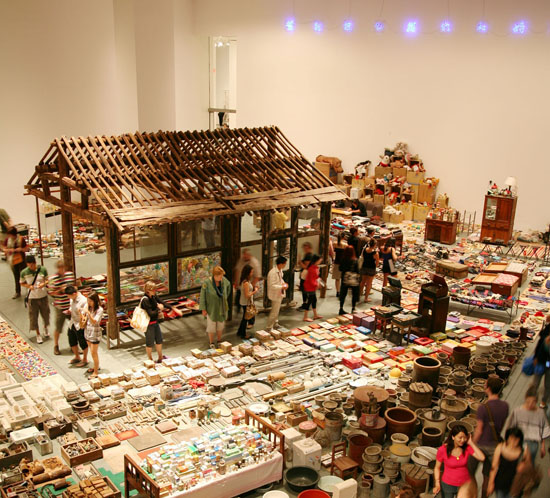
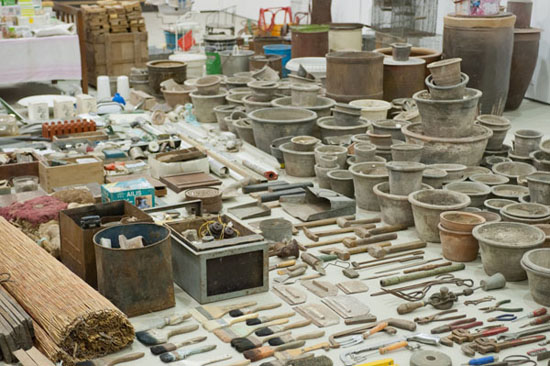
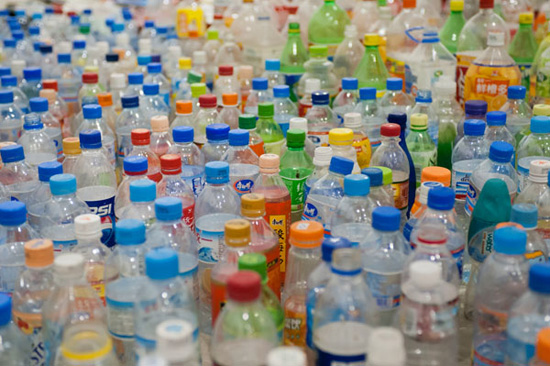
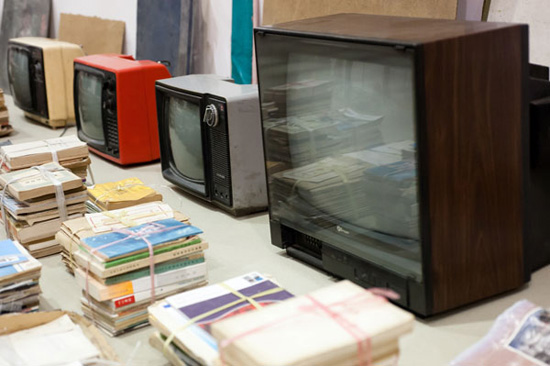
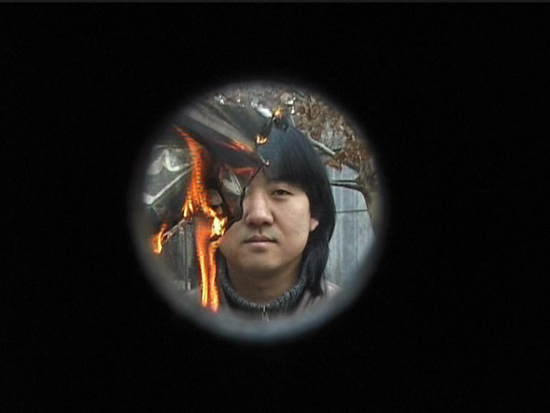
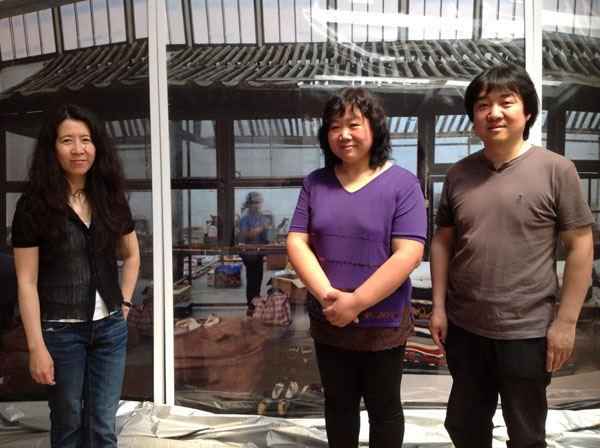


A beautifully written review (are we at last witnessing the demise of goobleygook?). Can’t wait to see the show, which promises to be a moving antidote to the pretentious Anish Kapoor extravaganza…
Pingback: Research Presentation No.3 | megandrurypvayear3